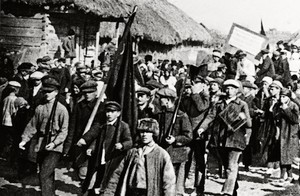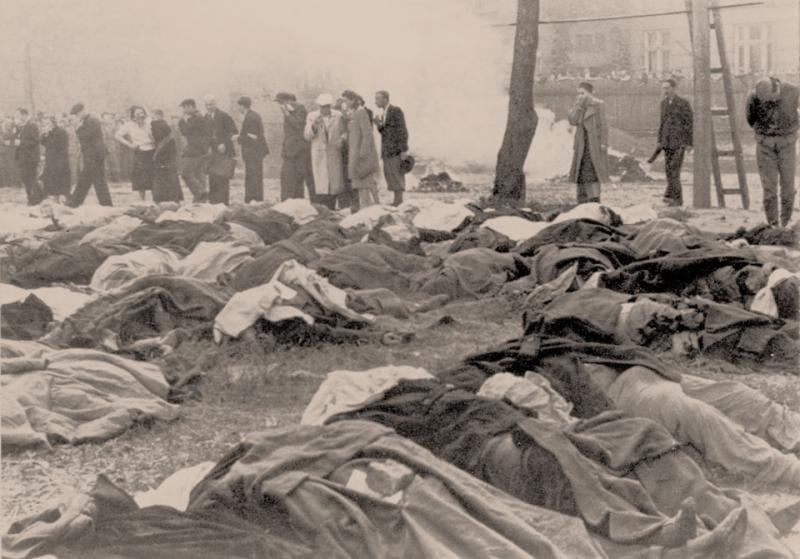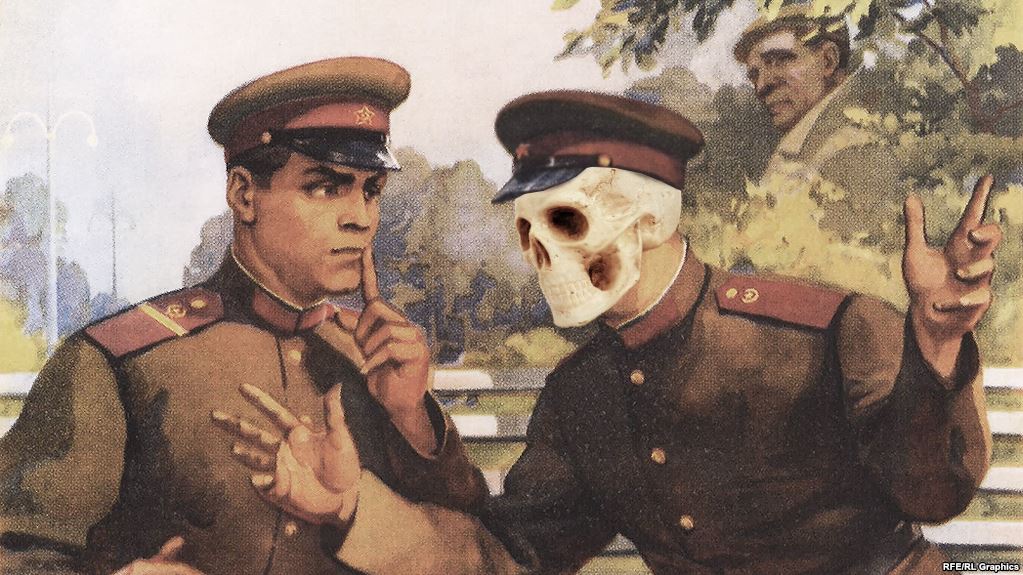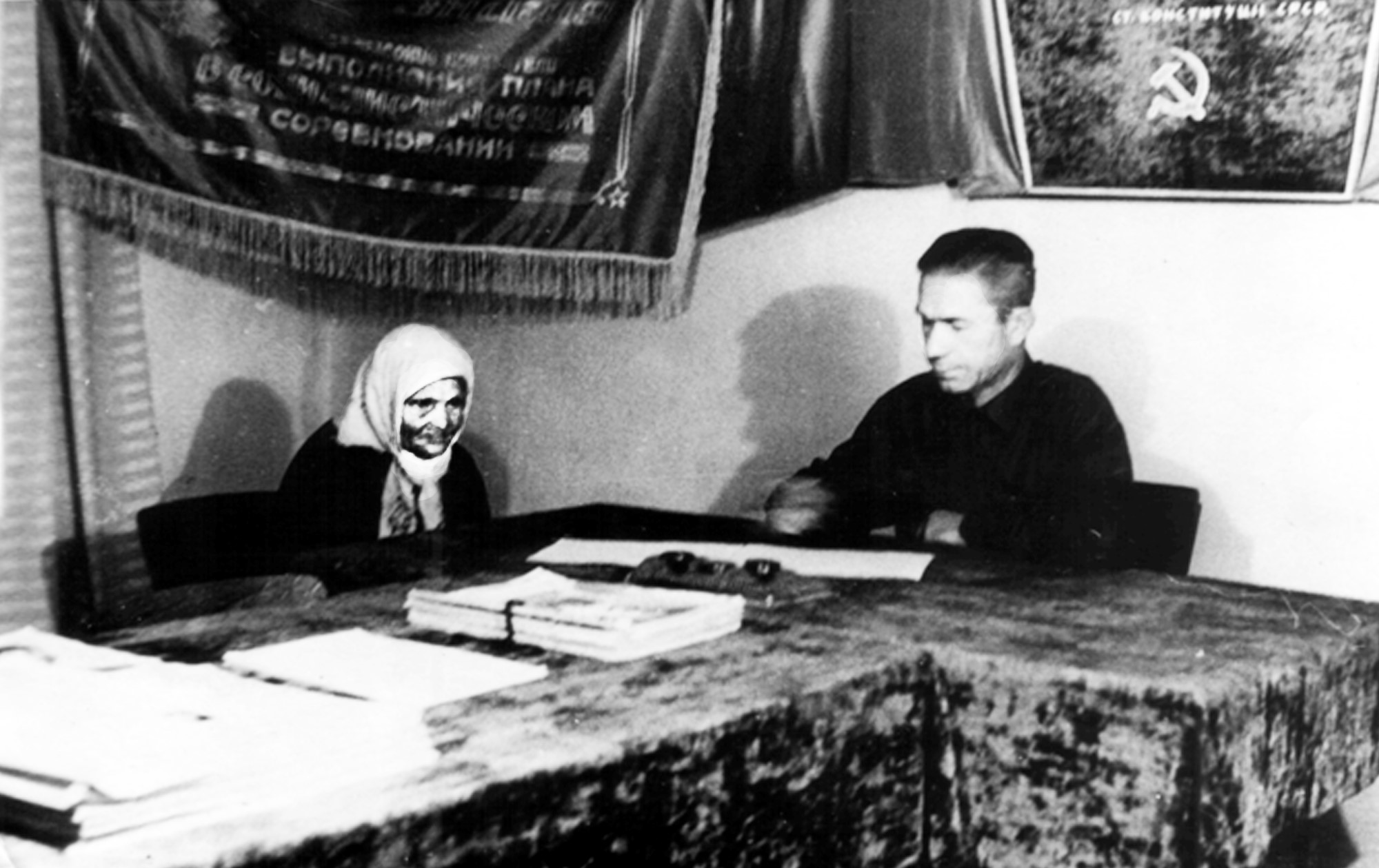"The Ukrainian village stood on the brink of a new tempest. A second mass exodus from the collective farms would topple Stalin’s grandiose plans. Fearing “the loss of Ukraine," Stalin decided to deal with the insurrectionists at their source..."
photographs of the peasant uprisings that led to Stalin's genocidal famine from from the archives of the SBU /Ukraine Security Service. Many photos were taken by the Soviet Cheka, or secret police.
"Iron fist" enthusiasts, who nostalgically yearn for the Stalinist order, embrace Soviet agitprop's rosy portrayal of social life. But in truth, at the start of the 1930s, the totalitarian empire was poised before a grave threat.
Ukraine had disrupted Stalin’s ambitious plans.
Today, wielding pavement stones and “Molotov cocktails,” Ukrainians ruined Putin’s strategy to resurrect the Russian empire. Back in Soviet times, armed with sticks and homemade handguns, Ukrainian peasants threatened the success of Stalin's imperialist plans.
Stalin provoked large-scale chaos and an explosion of violence in Ukraine. But before the communist regime was able to subdue the people, this country of the Kozaks erupted in an uprising.

The Bolsheviks responded to the Ukrainian village uprisings with punitive actions, grandiose in scale and cynicism.
Ukraine, the breadbasket of Europe, played a unique role in Stalin's plans for modernization, and it was clear at that time, much like today, that the success of the entire neo-imperialist project depended on Ukraine.
But it was precisely in this republic, pivotal to the USSR, that “something didn’t quite go as planned” after the start of enforced collectivization. What happened in the Ukrainian villages did not just call into question the success of collectivization, but it caused a rapid decline in the legitimacy of government authority. The stakes were extremely high in this game and led to an unbelievably savage finale.
“Maidan” 1930
The systematic collectivization of land, de-kulakization, and the closure of churches were met by the largest and most sustained peasant riots ever seen in Ukraine, beginning after the 20th of February. Anti-kolhosp protests and anti-Soviet uprisings gathered especial momentum in Eastern Volyn and Podillia, where the insurgent peasants succeeded in gaining control of several regional (raion) centres.
The first uprisings occurred in the border area of Shepetivska. At the beginning of March, the Deputy Head of the Ukrainian Socialist Soviet Republic (DPU Ukr SSR), K. Karlson reported that in the border territories of Slavutskyi and Yampilskyi, groups of villagers ranging in size from 300-500 people, and armed with sticks, pitchforks, axes, and occasionally with homemade firearms, “have been attacking the border guards, even in spite of machine gun fire.” (1)

In the Teofipolskyi raion, routine disturbances grew into an insurgency movement. Within a few days, groups of villagers 30 in number had grown to 200-300 members. (2)
Soon they captured the raion centre of Hrytsiv. According to the head of the DPU USRR, V. Balytskyi, the Soviets now only controlled a few villages in the Shepetivschyna region. (3)
The anti-soviet peasant insurgency took over the Liubarskyi and Yanushpilskyi raions of the neighbouring Berdychivsk area. Fifteen hundred villagers captured Liubar, forcing the police units out of the raion centre.
Following the elimination of the soviet government from the town, the uprising spread to nearby villages. It was most acute from March 3-5th, when the villagers, conscripting horses from the kolhosp, and armed with pitchforks, hunting rifles, knives and guns, began to kill komsomol members, party members, and Soviet agitators. In the Liubarskyi raion alone, 29 village councils were liquidated during this uprising. (4)

By mid-March, peasant uprisings and armed riots had overwhelmed 16 raions in the border zone.
Three hundred and forty three village committees were taken over in the raions of Tulchynska, Mohylivska, and Vynnytska: in 73 villages the soviet government was dismantled, and over 80 armed attacks had occurred. (5)
New administrators were elected in those villages liberated from soviet control. In the raions of Bershadskyi, Dzhlunskyi, Olhopilskyi, and Obodivskyi of the Tulchynskyi rasion, the peasants rallied around slogans for independence, and sang the national anthem.
Several thousand peasants marched on the raion centre of Sharhorod (Mohylivska rasion) to bring the communists and local Soviet agitators to justice (6). The majority of the kolhosps were liquidated.
Stalin carefully followed the situation in the Tulchynskyi area. On March 19, Vsevolod Balytskyi , the top Chekist (Secret Police) in Ukraine wrote to Stanislav Kosior, the general Secretary of the Ukrainian Communist Party: “Comrade Leplevskyi has just informed me that Stalin is proposing the adoption of more aggressive measures in the Tulchynskyi raion, and with regard to the repeated unrest there, emphasized that I stop making speeches but instead take decisive action...” (7)
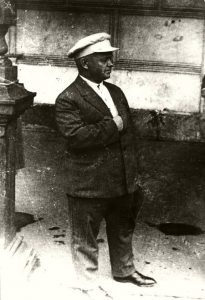
On March 25, the people’s commissar for the USSR Workers-Peasants Inspection Commissariat, Grigory Ordzhonikidze described the situation in Tulchynska, Shepetivska, and Mohylivska raions: “The uprising has been suppressed by force, with machine guns and in some places artillery... Similar riots have occurred in other raions (Korostenskyi, Vinnytskyi, Kryvorizkyi, Kharkivskyi, and Melitopolskyi.)” (8)
At the same time, uprisings enflamed the South. V. Balytskyi arrived in person to coordinate the suppression of peasant revolts in the raions of Chervonopovstanskyi, Fridrikh-Enhelsivskyi, Frunzivskyi and Blahoiivskyi. (9)
The uprising was gradually taking over the East, advancing towards the Soviet capital of Kharkiv.
At the end of February, peasant units, numbering up to 150-200 men, were organized in villages located in the raions of Kruhle, Konoplianivka and Demianivka Starobilska. The insurgents rallied around the slogan “Down with soviet rule, long live the People’s Will.”

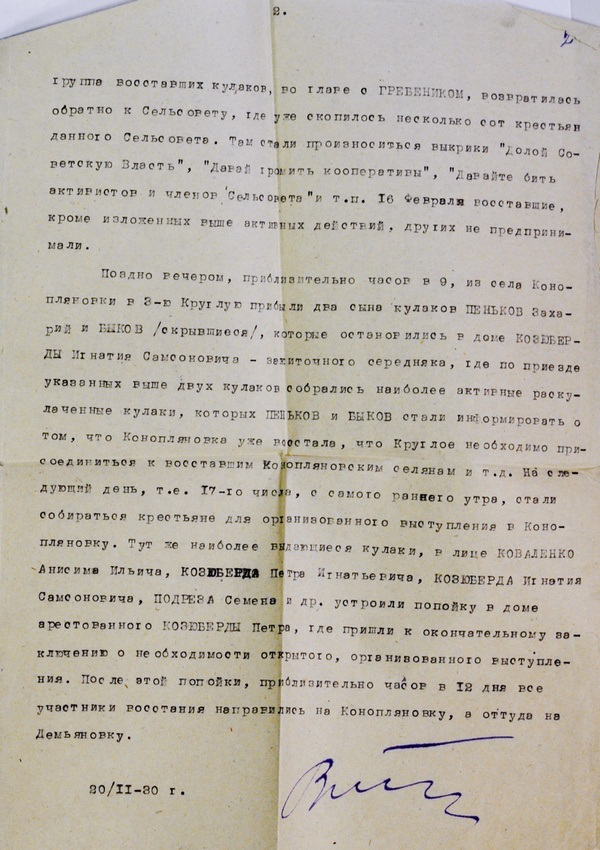
The uprising in the Sumskyi raion was especially fierce. The massive peasant demonstrations offered armed resistance in several villages of the Ternivskyi raion. Full blown battles with police units occurred in the villages of Dmytrivka and Sukhoverkhivka and the settlement of Suprunivka.
One peasant insurgent unit, numbering 20 people, armed with primitive handguns and hunting rifles, operated in Romenschyna throughout the month of March. This unit was associated with the peasant insurgent organization of Otaman Luka Klitka, rallying the Romenska and Prylutska regions around the call for the re-establishment of the Ukrainian National Republic (UNR). Armed clashes against the government DPU units continued until the end of July.
Although the DPU made the announcement that “peace had returned to practically all of Ukraine,” in early April another large-scale insurgency erupted at Pavlohradske, in Dnipropetrovsk, resulting in the deaths of 30 Soviet government representatives and agitators. (10)
The peak of the riots and armed uprisings occurred in March, 1930.
In March, 1930, throughout Ukraine there were 2945 mass peasant demonstrations, or 45% of the total uprisings (6528) throughout the Soviet Union. This was at a time when the Ukrainian Socialist Soviet Republic (USRR) accounted for only one fifth (20%) of the total population of the USSR.
Riots and insurgency engulfed every region of the Ukrainian SSR, including the autonomous region of Moldova. Throughout 1930, the security organ of the DPU recorded 4098 mass demonstrations in Ukraine. (11)
As a result of this unprecedented peasant uprising, comprehensive collectivization in the Ukrainian SSR was severely disrupted. Consequently, as of 20 September 1930, only 26.6% of the kolhosps remained. (12)
Unfortunately, this turned out to be a Pyrrhic victory, when as many as 150,000 “Kurkuls” were deported [13] while 170,000 were sentenced for “crimes against the village.” [14]
After such losses, a repetition of what happened in early 1930 seemed impossible.
1931: Compromise with the Devil
The Bolshevik leadership made the most of the temporary stifling of the protest movement in Ukraine. Lessons were learned from the unsuccessful attempts at collectivization in the first months of 1930.The new approach imposed a burden of heavy taxes solely on private farmers, while offering subsidies to those remaining in the kolhosps.
The majority of Ukrainian peasants took part in the game imposed by Stalin, and they begin to return to the collective farm system.
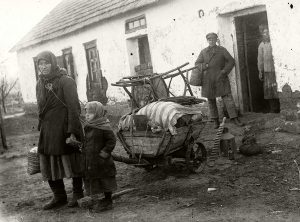
Understandably, under such an artificial management, there was no question of any sort of motivated or productive work. However, the government was still able to put the brakes on the flames of revolution and impose its rules of play. So in 1931, the number of mass demonstrations in Ukraine came down to 319. (15)
Bearing in mind the failed massive uprisings, the most ardent insurgents engaged in new tactics of armed battle, forming small, isolated units of diversionary saboteurs - so called 'kurkul gangs'.
In 1931 Ukraine, the DPU reported 288 such units, 28 of which operated under political slogans. (16)
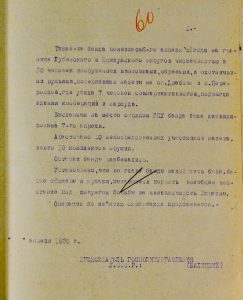
Peasants considered entry into the kolhosps as a maneuver to escape repression, because anyone who opposed collectivization was considered a “kurkul” (in 1931 the second wave of repressions deported over 130,000 peasants out of Ukraine. [17])
Yet, collectivization proved itself to be not a socialist zone, free from repression - but became rather Stalinist work camps. Savage retribution awaited all who fell into the trap and refused to follow the Bolshevik rules.
| Year | Mass Demonstrations | Participants | Terrorist Acts |
|---|---|---|---|
| 1928 | over 150 | ca. 40,000 | over 400 |
| 1929 | ca. 150 | ca. 40,000 | 1437 |
| 1930 | 4098 | over 1 million | 2779 |
| 1931 | 319 | over 75,000 | 1354 |
| 1932 | 923 by July 15 | over 220,000 | over 1,000 |
The Year 1932: Threat of a new “Maidan”
By the spring of 1932, when the famine began in the collectivized villages, any hopes the peasants ever entertained that they would be safe from food confiscation or taxation terrors were completely dashed.
In 1932 Ukraine, the number of mass peasant demonstrations was again on the rise: January- 35; February – 33; March- 152; April- 282; and by the first half of May - 166 (18)
Once again, compared with the rest of the USSR, the scale of anti-kolhosp movement in Ukraine in 1932 was unprecedented. From the beginning of 1932 until July 15, the DPU reports 932 mass peasant protests (from a total of 1630 for the entire USSR), representing 56.62% of the Union total. (19)
The Ukrainian village stood on the brink of a new tempest. A second mass exodus from the collective farms would topple Stalin’s grandiose plans.
The Soviet leadership understood that massive deportations were not effective. Fearing “the loss of Ukraine”, Stalin decided to deal with the insurgents at their source, especially since the mechanisms for massive executions had been well established in the 1920s.
Rather than deport large groups of the population to far-off locations, the Bolsheviks decided to turn the entire territory of the Ukrainian SSR into one massive stockade.
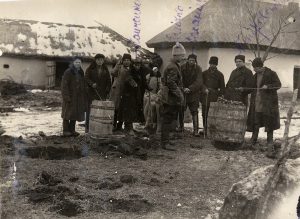
The hopelessness of any compromise with imperialism is shown by the millions of Ukrainians peasants destroyed by famine, many of whom had even been subservient to the government and were already living within the system of collectivization.
Although in the 1930s millions of Ukrainian victims paid with their lives in a failed attempt to halt the advancement of the Stalinist totalitarian empire, they did succeed in preventing its final establishment: internal opposition by the people halted its foreign expansion.
The greatest Ukrainian tragedy of the twentieth century must warn us against any illusions regarding the Empire's next moves.. The empire is vindictive, and will never forgive involvement in any type of “Maidans”; it will ruthlessly retaliate even against those who merely sympathized. It is merciless to those who claim to be neutral, who stood and watched from the sidelines.
[hr]Footnotes:
- ЦДАГОУ. – Ф. 1. – Оп. 20. – Спр. 3191. – Арк. 37.
- ДАХО. – Ф. П-458. – Оп. 1. – Спр. 326. – Арк. 8.
- ЦДАГОУ. – Ф. 1. – Оп. 20. – Спр. 3184. – Арк. 95.
- ЦДАГОУ. – Ф. 1. – Оп. 20. – Спр. 3191. – Арк. 41.
- ЦДАГОУ. – Ф. 1. – Оп. 20. – Спр. 3154. – Арк. 11.
- ЦДАГОУ. – Ф. 1. – Оп. 20. – Спр. 3184. – Арк. 62, 64.
- ЦДАГОУ. – Ф. 1. – Оп. 20. – Спр. 3154. – Арк. 11.
- Васильєв В. Перша хвиля суцільної колективізації і українське селянство / В. Васильєв // Васильєв В., Віола Л. Колективізація і селянський опір на Україні (листопад 1919 – березень 1930 рр.). – Вінниця, 1997. – С. 233.
- ЦДАГОУ. – Ф. 1. – Оп. 20. – Спр. 3154. – Арк. 30–31.
- Даниленко В.М. Антирадянське повстання селян в Україні напередодні голодомору / В.М. Даниленко // Павлоградське повстання 1930 р.: Документи і матеріали / Упоряд. В. М. Даниленко. – К., 2009. – С. 13–27.
- Трагедия советской деревни. Коллективизация и раскулачивание. Документы и материалы. 1927 – 1939: в 5 т. – М., 2000. – Т. 2. – С. 791.
- ЦДАГОУ. – Ф. 1. – Оп. 20. – Спр. 3153. – Арк. 72.
- Советская деревня глазами ВЧК–ОГПУ–НКВД. 1918 – 1939. Документы и материалы: в 4 т. – М., 2003. – Т. 3. – Кн. 1. – С. 546 – С. 533.
- ЦДАГОУ. – Ф. 1. – Оп. 20. – Спр. 6390. – Арк. 135.
- Трагедия советской деревни. Коллективизация и раскулачивание. Документы и материалы. 1927 – 1939: в 5 т. – М., 2001. – Т. 3. – С. 350.
- ГДА СБУ. – Ф. 16. – Оп. 27 (1951 р.). – Спр. 4. – Арк. 8.
- Советская деревня глазами ВЧК–ОГПУ–НКВД. 1918 – 1939. Документы и материалы: в 4 т. – М., 2003. – Т. 3. – Кн. 1. – С. 708, 710, 711.
- Советская деревня глазами ВЧК–ОГПУ–НКВД. 1918 – 1939. Документы и материалы: в 4 т. – М., 2005. – Т. 3. – Кн. 2. – С. 109.
- Трагедия советской деревни. Коллективизация и раскулачивание. Документы и материалы. 1927 – 1939: в 5 т. – М., 2001. – Т. 3. – С. 441.
Further reading:
- Informers, Moonshine, and Disdain for Property: How the Holodomor changed the way of life in the village.
- Soviet Press 1932-1933: "Hunger strikes in the West, new restaurants in Kharkiv"
- "Ukrainian Pages" - French graphic comics about Holodomor and nostalgia for the USSR
- Hunger in the USSR. Excerpt from "Bloodlands" by Timothy Snyder
- Articles at Ukrainska Pravda regarding Holodomor

